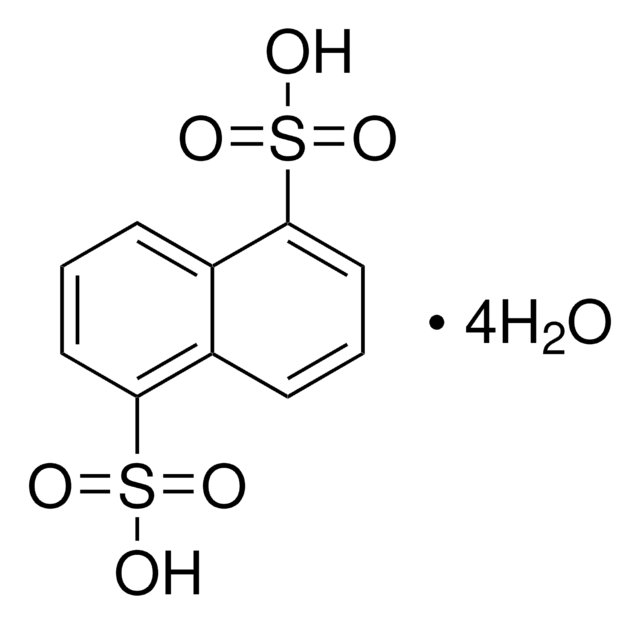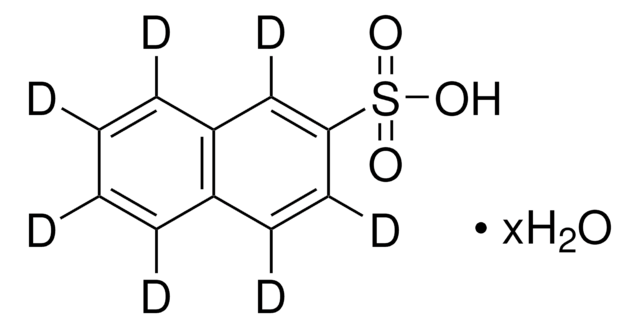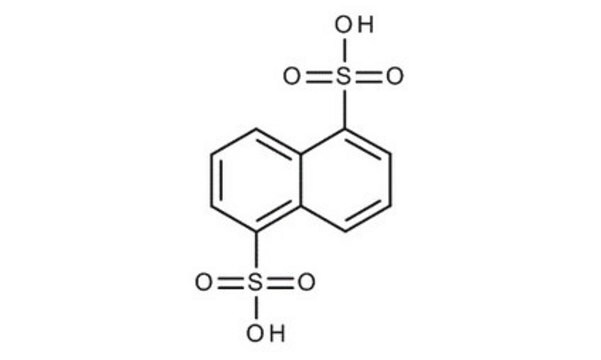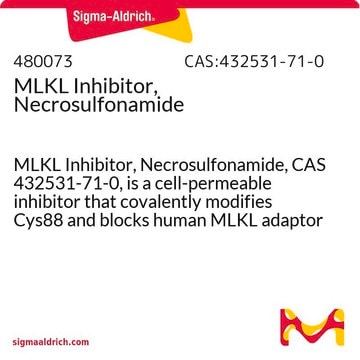249548
2-Naphthalenesulfonic acid
technical grade, 70%
Synonim(y):
β-Naphthalenesulfonic acid, 2-Naphthylsulfonic acid, 2-Sulfonaphthalene
About This Item
Polecane produkty
klasa czystości
technical grade
Próba
70%
Postać
solid
rozpuszczalność
water: freely soluble(lit.)
ciąg SMILES
OS(=O)(=O)c1ccc2ccccc2c1
InChI
1S/C10H8O3S/c11-14(12,13)10-6-5-8-3-1-2-4-9(8)7-10/h1-7H,(H,11,12,13)
Klucz InChI
KVBGVZZKJNLNJU-UHFFFAOYSA-N
informacje o genach
human ... EGFR(1956) , LCK(3932)
Powiązane kategorie
Opis ogólny
Właściwości fizyczne
Hasło ostrzegawcze
Danger
Zwroty wskazujące rodzaj zagrożenia
Zwroty wskazujące środki ostrożności
Klasyfikacja zagrożeń
Eye Dam. 1 - Met. Corr. 1 - Skin Corr. 1A
Kod klasy składowania
8A - Combustible corrosive hazardous materials
Klasa zagrożenia wodnego (WGK)
WGK 3
Temperatura zapłonu (°F)
Not applicable
Temperatura zapłonu (°C)
Not applicable
Certyfikaty analizy (CoA)
Poszukaj Certyfikaty analizy (CoA), wpisując numer partii/serii produktów. Numery serii i partii można znaleźć na etykiecie produktu po słowach „seria” lub „partia”.
Masz już ten produkt?
Dokumenty związane z niedawno zakupionymi produktami zostały zamieszczone w Bibliotece dokumentów.
Klienci oglądali również te produkty
Nasz zespół naukowców ma doświadczenie we wszystkich obszarach badań, w tym w naukach przyrodniczych, materiałoznawstwie, syntezie chemicznej, chromatografii, analityce i wielu innych dziedzinach.
Skontaktuj się z zespołem ds. pomocy technicznej















